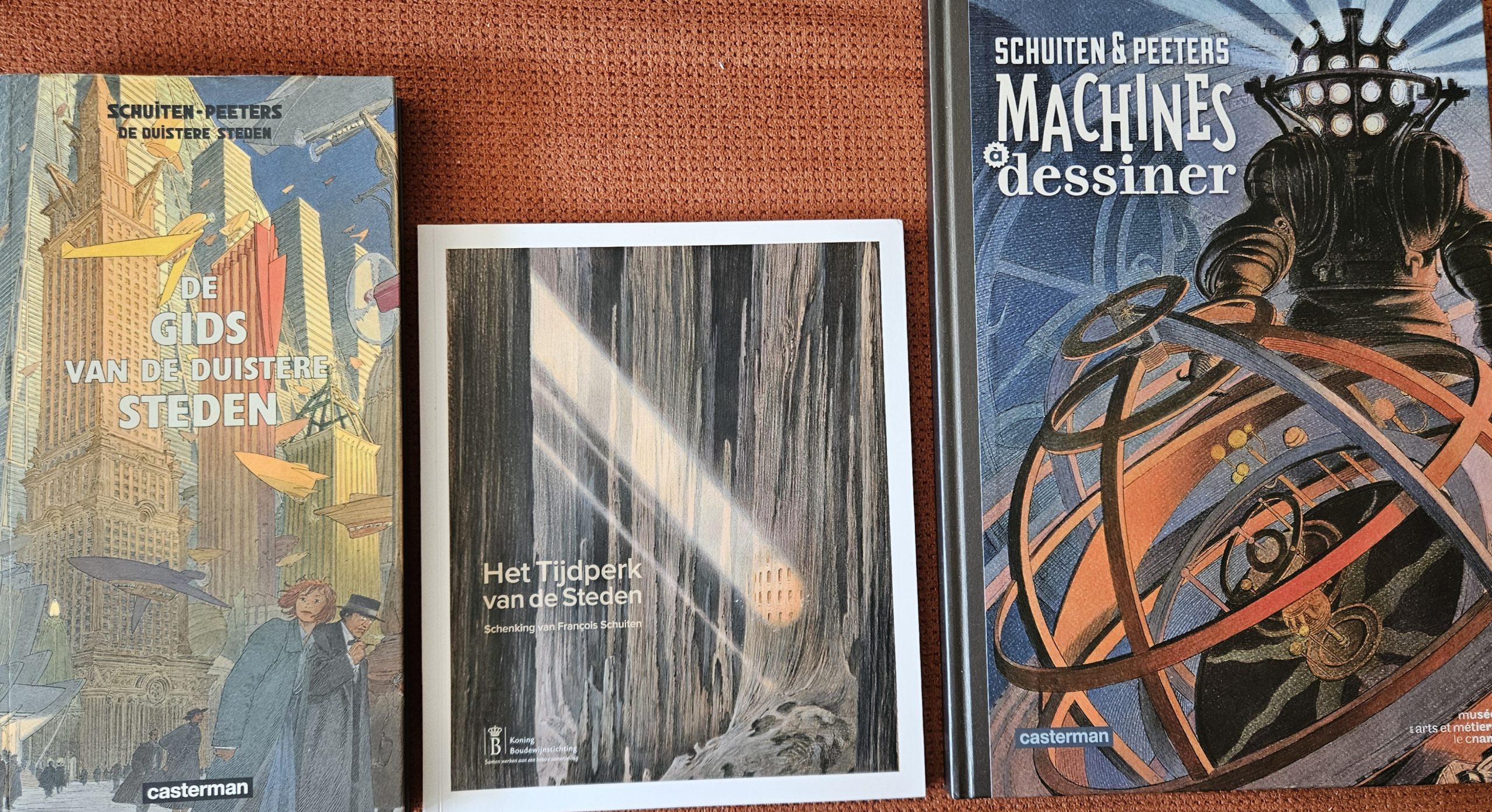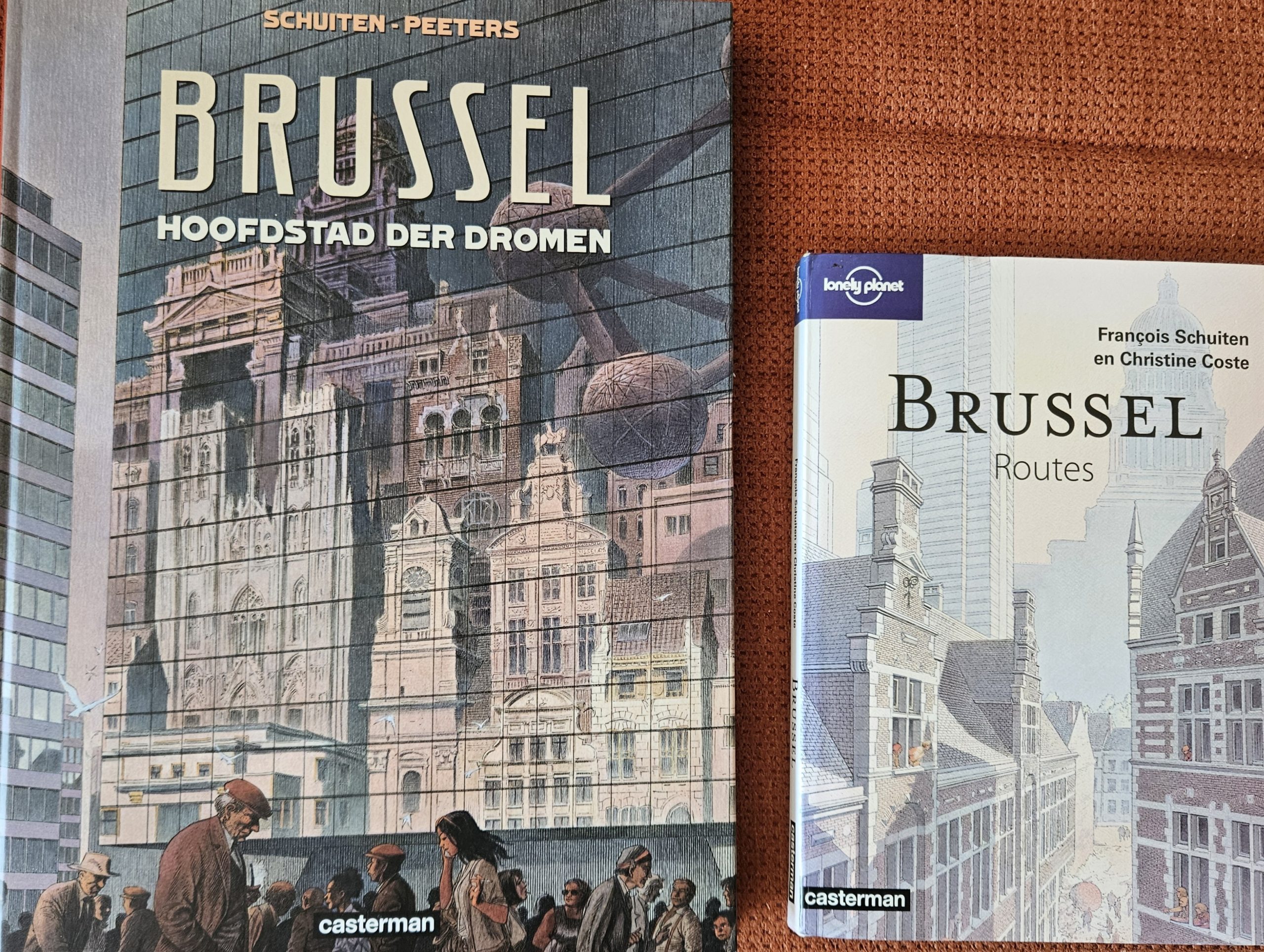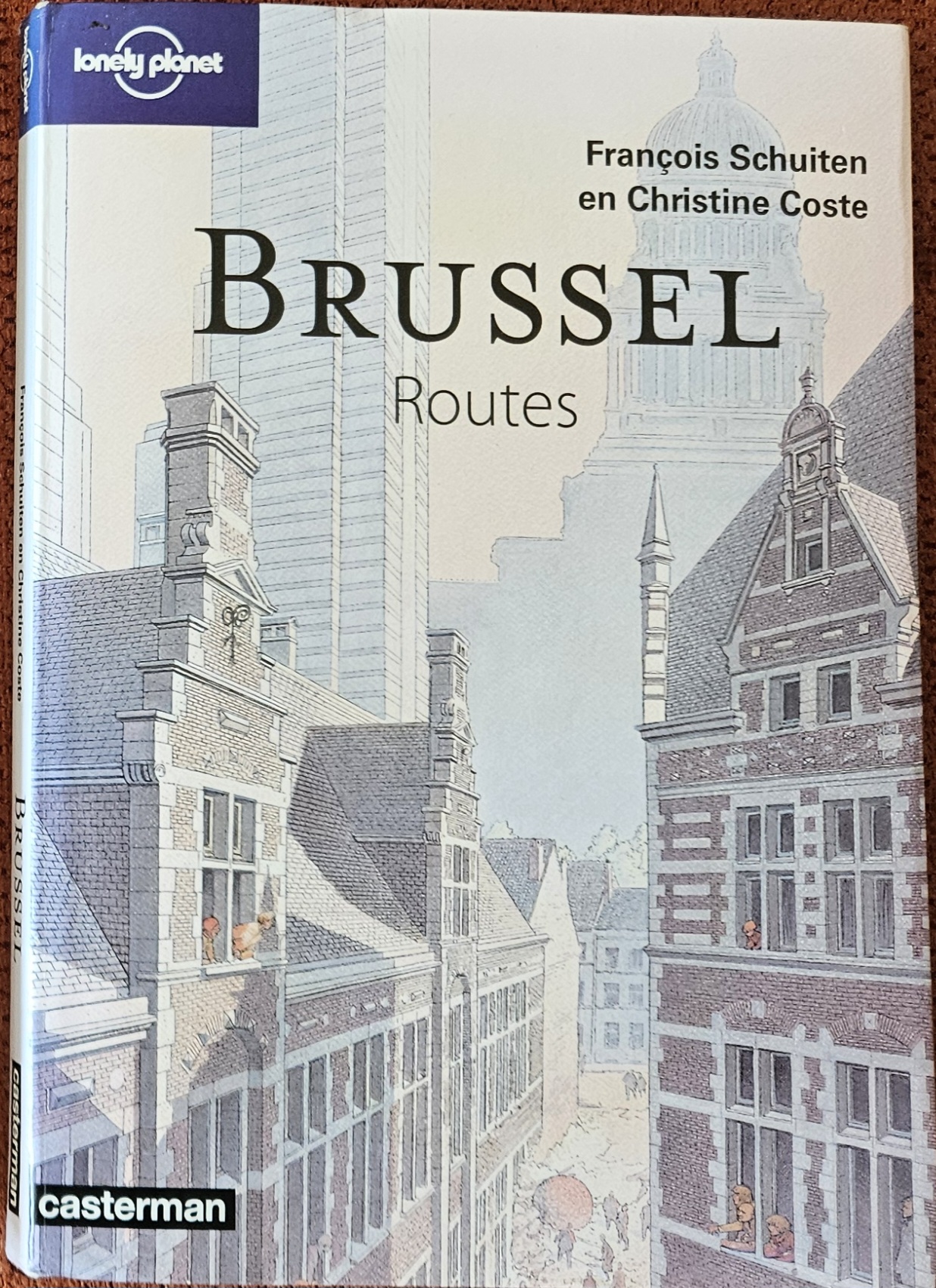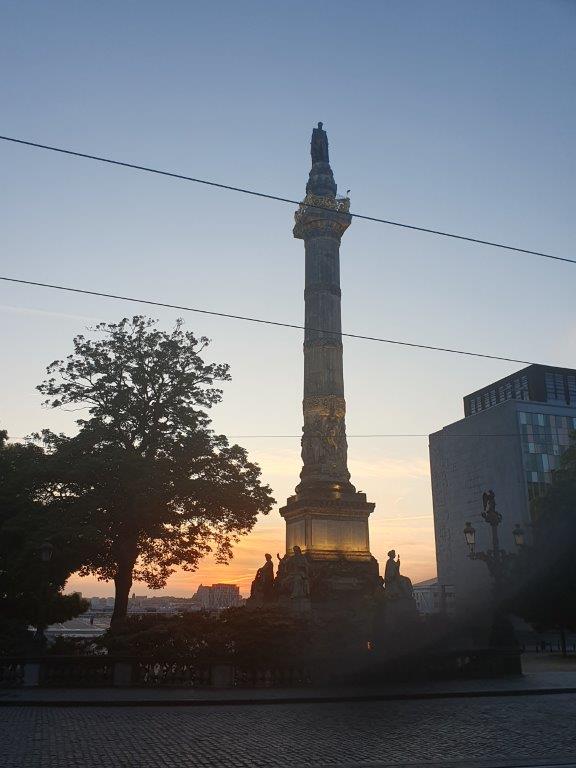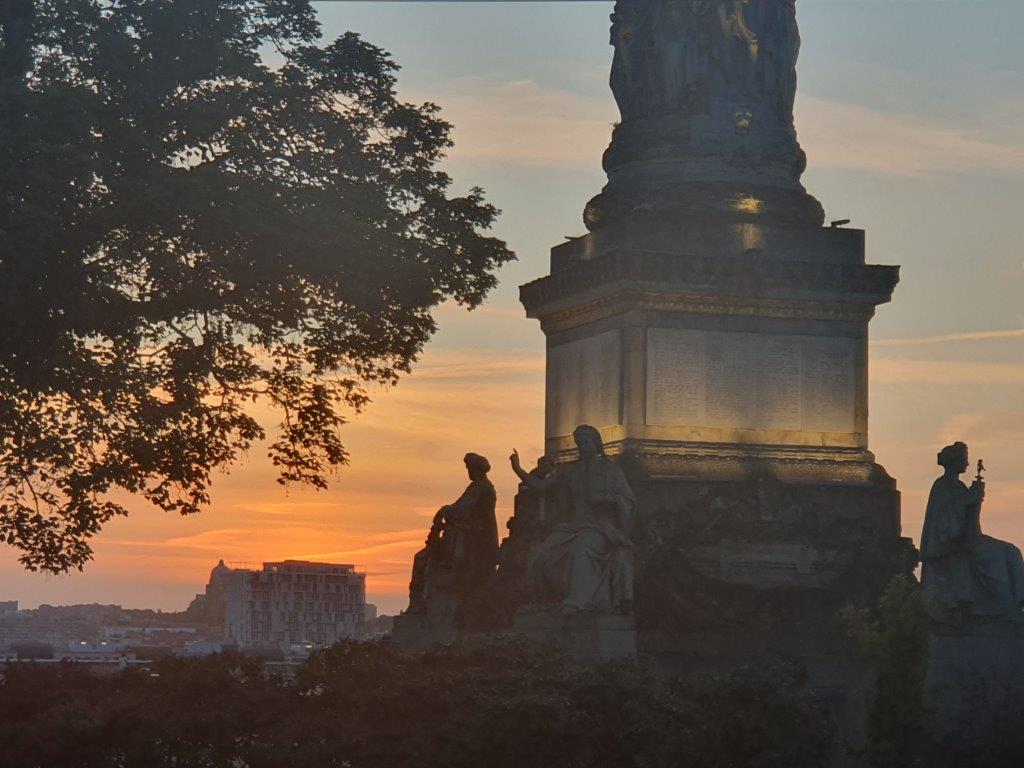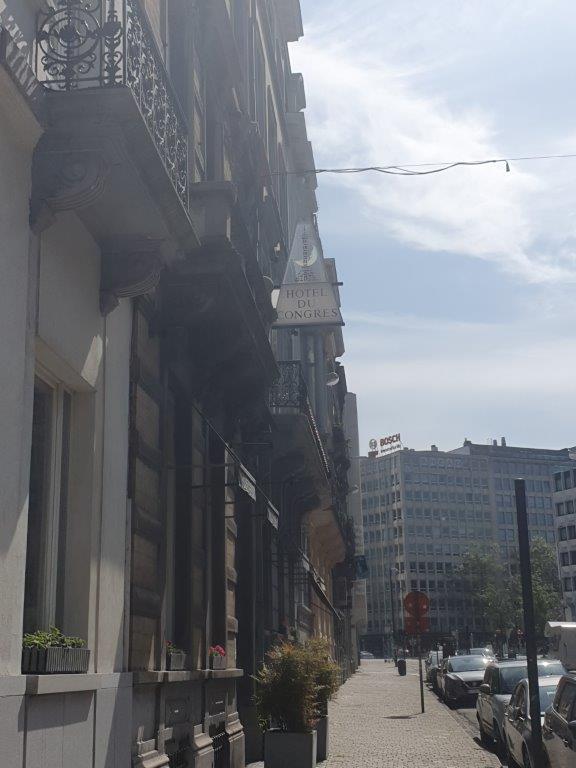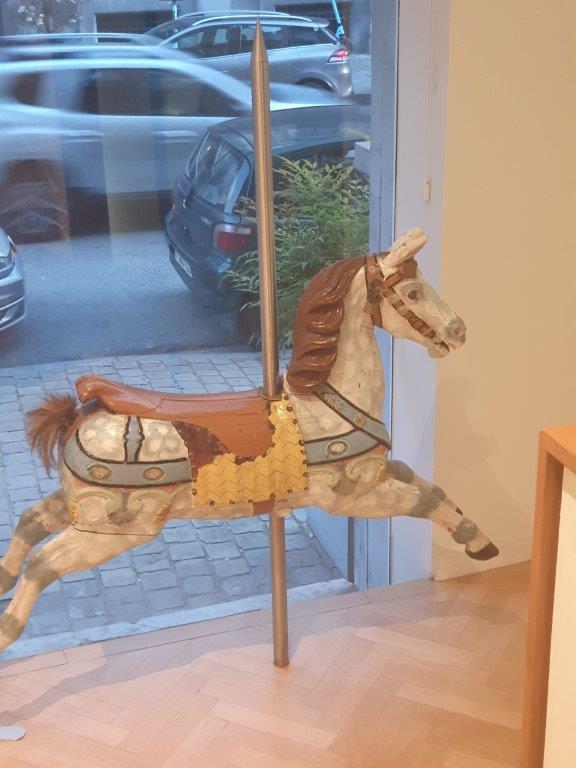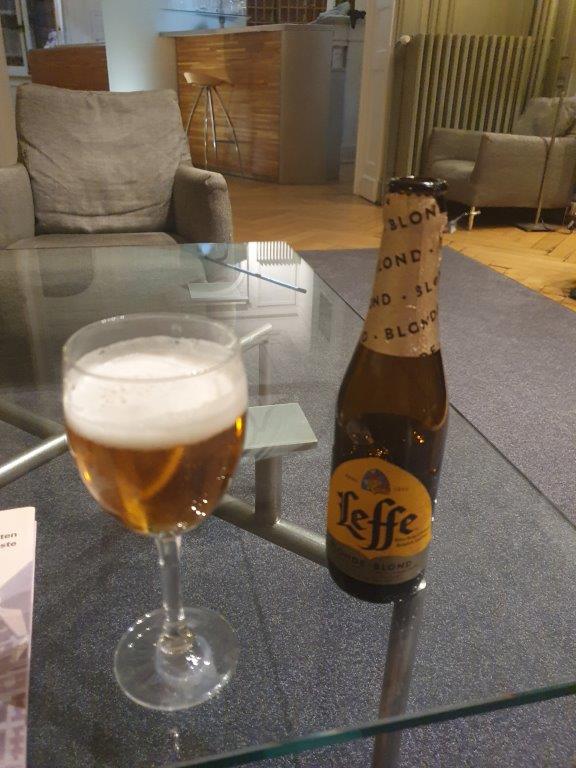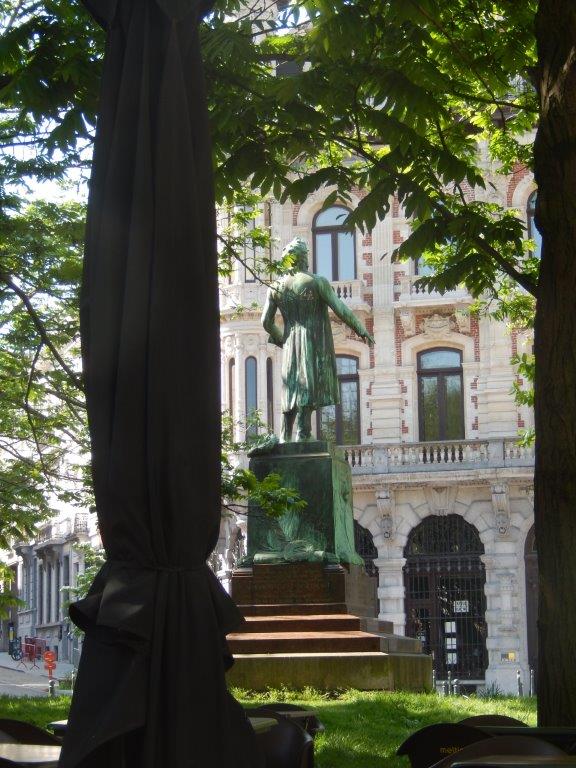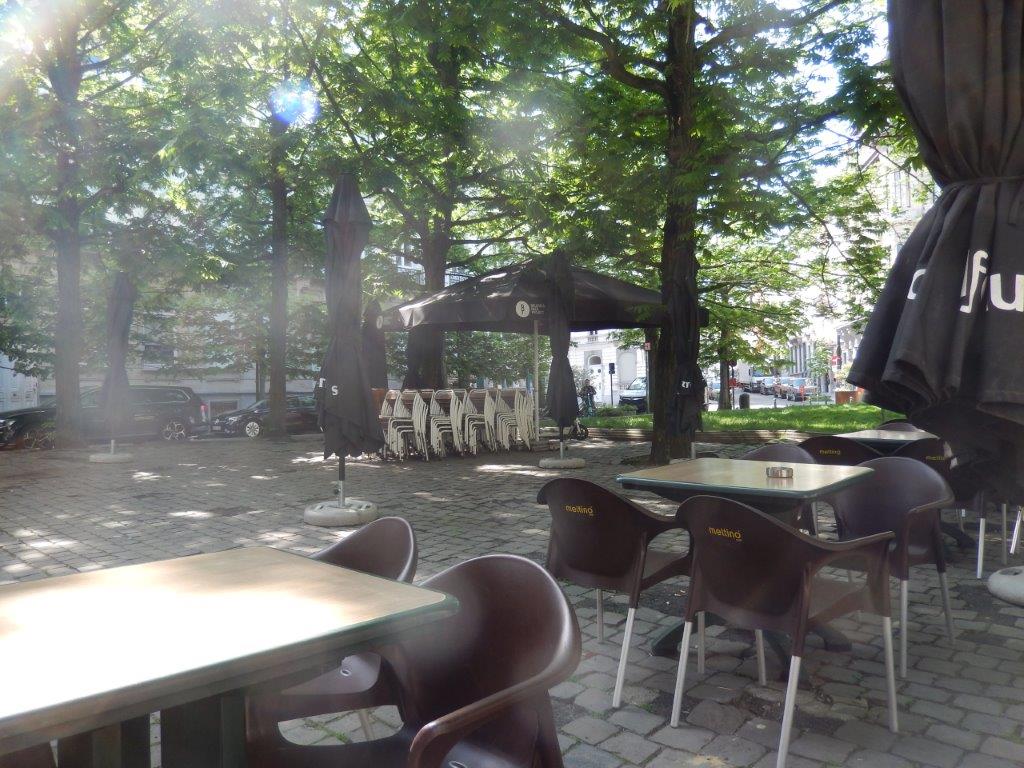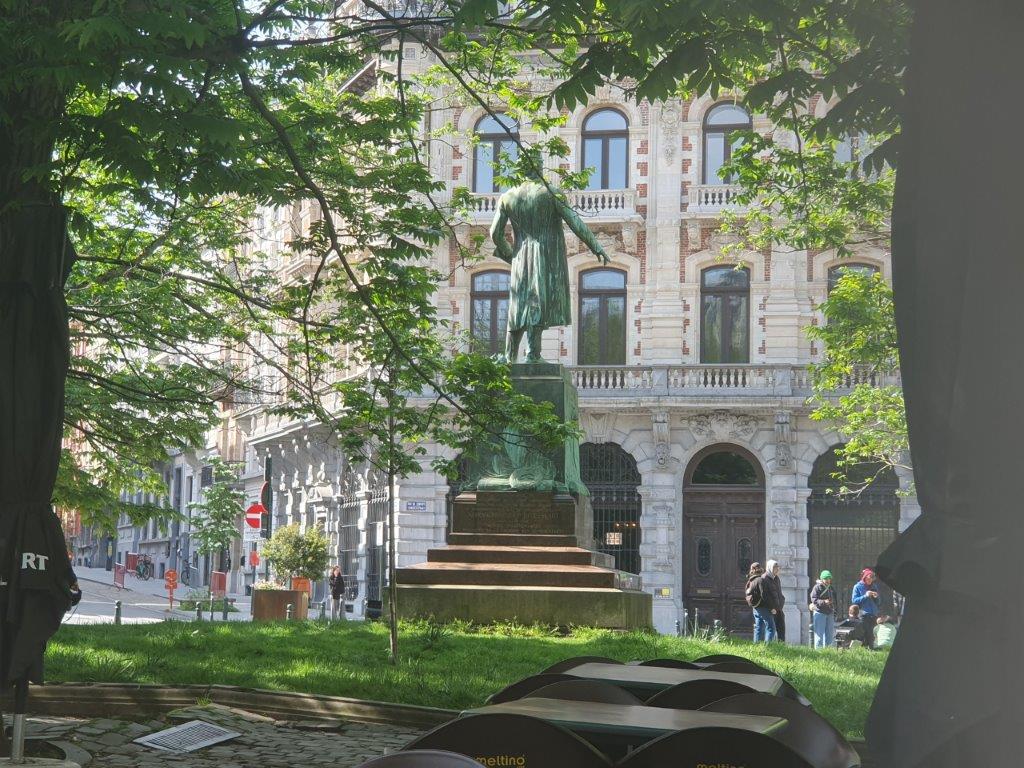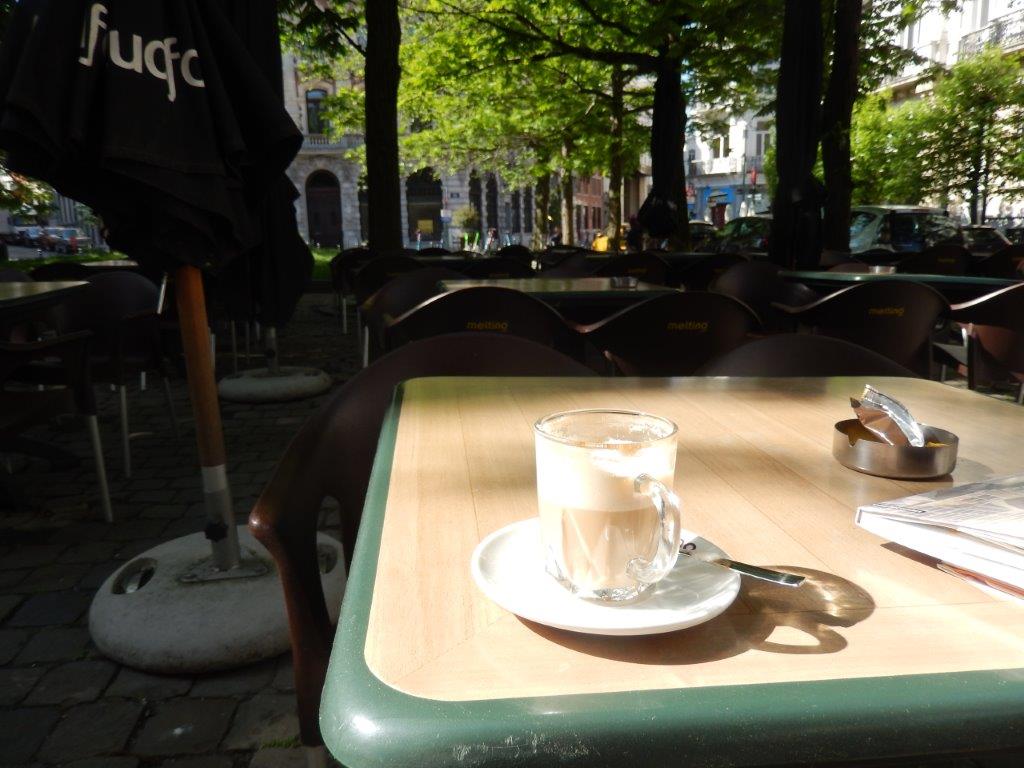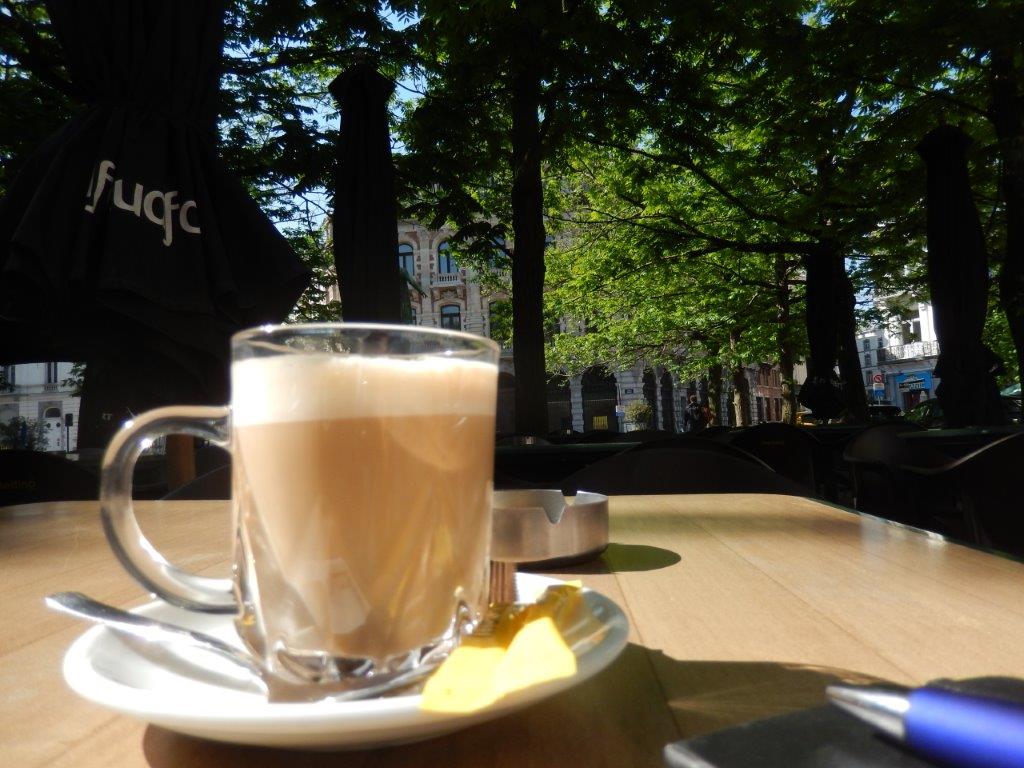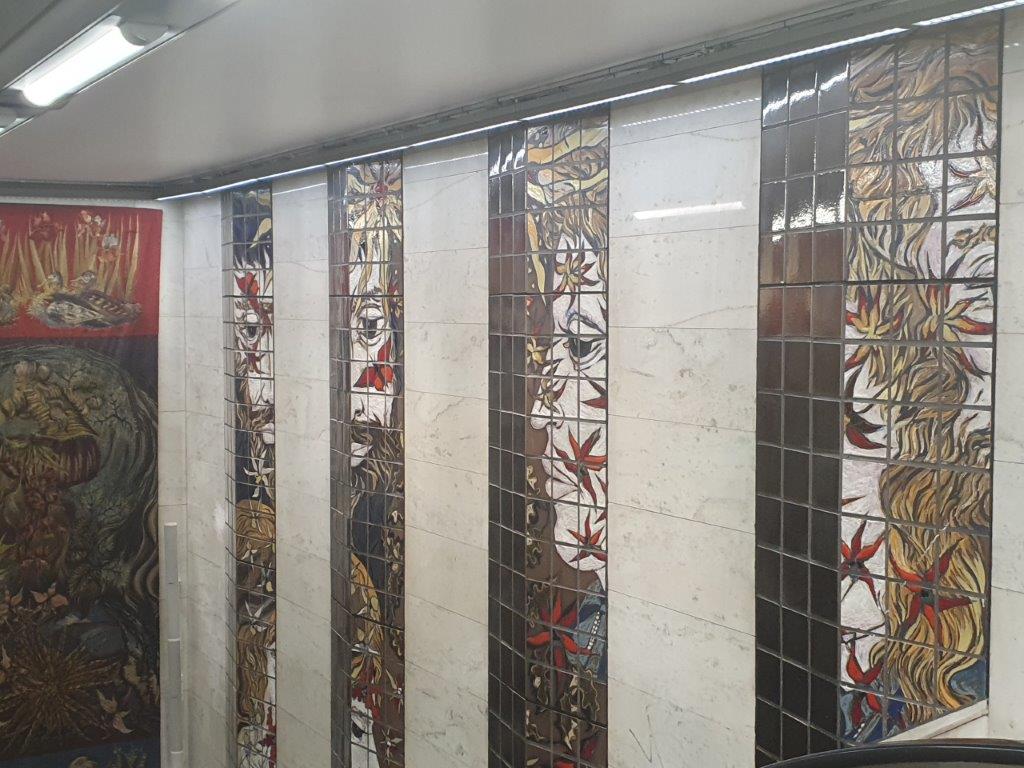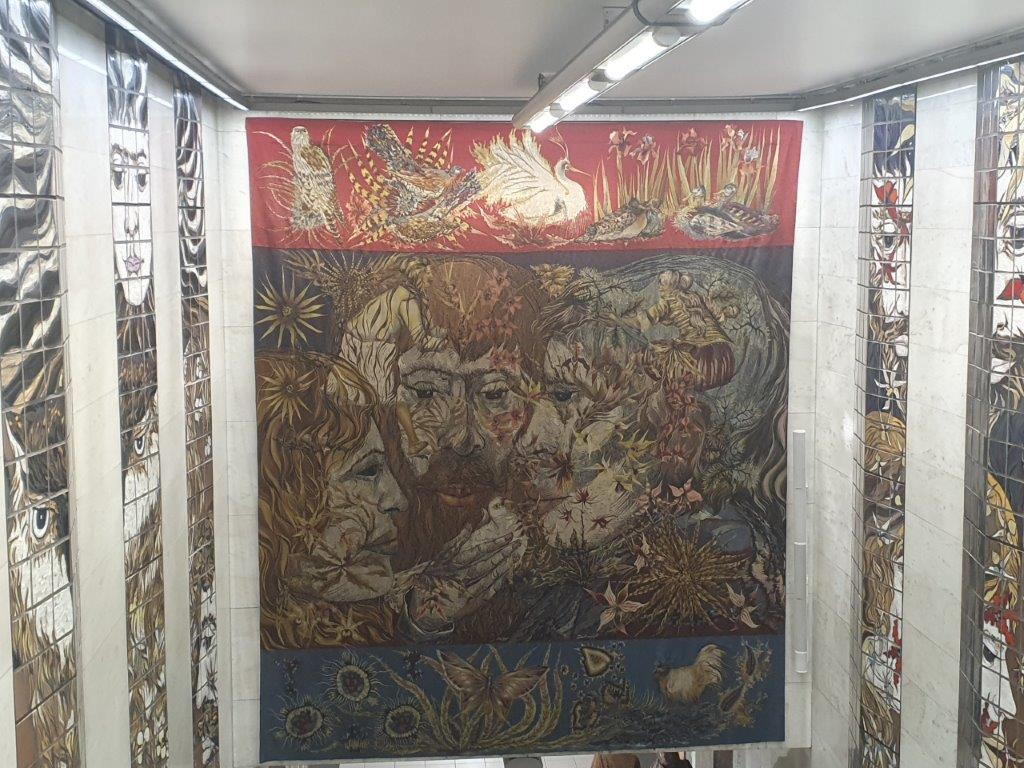Brussels/Brüsel: An architectural melting pot out of control / One of the Cités Obscures / Capital of the European comics 2023
Brussels is one of The Wandelgek’s favorite towns for visits. There was a time between 2008 and 2013 that he visited the town almost every year. The latest visit however was quite some years ago which is long… too long.
My previous Brussels visits:
Why Brussels? The obvious answer is because it has a tiny but extremely beautiful medieval center boasting arguably the most beautiful central square in the world: The Groote Markt (The Big Market).
But that is not it. The Wandelgek loves Antwerp, Bruges and above all Ghent more if it comes to comparing medieval city centers. No Brussels has much more to offer. It is e.g. the capital of European comics, the capital of the European Union and a melting pot of out of control architectural chaos.
The Wandelgek loves architecture and years ago he started reading a comic book which he borrowed from a library. Its title was: De muren van Samaris (or in french: Les Marailles de Samaris) by François Schuiten and Benoit Peeters. It was the starting point of a (comic)book series called De duistere steden (in french Les Cités Obscures).
Beneath are some of the works of Schuiten, which The Wandelgek collected and used as sources for this blogpost:
Les Cités Obscures / De Duistere Steden / The Obscure Cities
Schuiten’s father had been an architect in Brussels and he was inspired by architecture too and he incorporated that inspiration in his drawings.
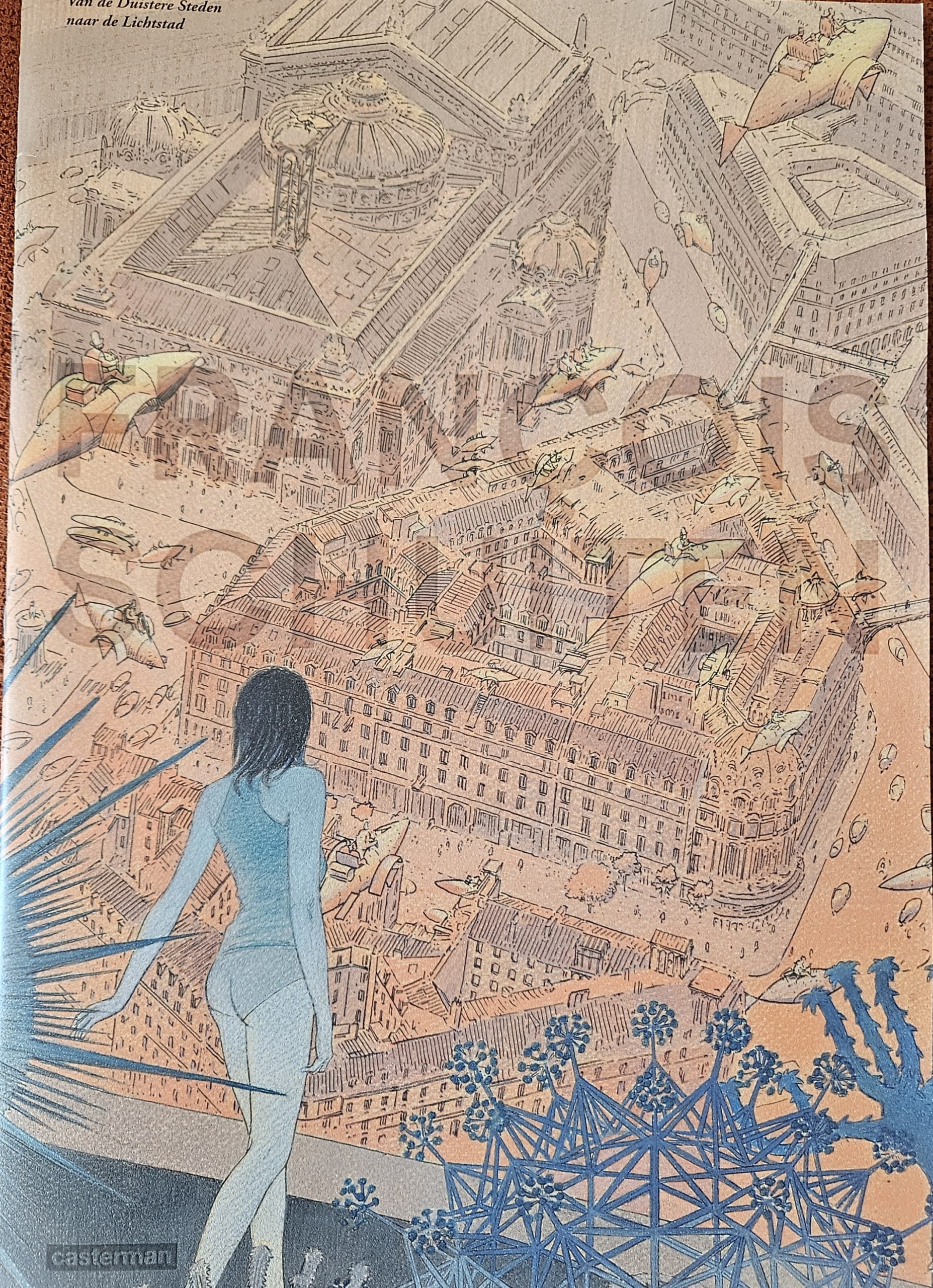
Poster book: Van de duistere steden naar de lichtstad /From the Obscure Cities to the City of Light (Paris)
Les Cités Obscures is about a planet, smaller than our Earth, in some ways very different but in other ways quite similar, which can’t be seen fro Earth because it hides in a continuous eclipse behind the moon. You could describe it as an alternative Earth. Thus the people on Earth are oblivious of its existence, but the people on the planet of the dark cities are not oblivious of our planet which they refer to as the mystic planet.
The planet is much more city life oriented. The cities have names like those on our world like e.g. Bayreuth or Zanzibar or almost similar like Pahry, København, Genova or Brüsel. There are also cities with names that are completely new to us like Calvani, Mylos, Samaris or Urbicande.
The main idea is that every city has been developing from a specific architectural style or development into an extreme expression of that style.
E.g.: Samaris is a city of façades where nothing is real, Galatograd is completely build in the style of Russian onion like domes. Pahry is build in a generic style of large high appartment blocks and avenues (Hausman). Mylos is a industrial revolution style town. Urbicande is a mix of Jugendstil, Bauhaus and has been inspired by autocratic architecture as well. Xhystos is a town where Art Nouveau, specificly the extreme version of Victor Horta has been stretched to its limits.
And then there’s Brüsel. The real Brussels was long ago a beautiful old town with the river Zenne running through. Project developers took over and the town became a chaotic mix of styles. This chaos can be found in its most extreme form in Brüsel.
François Schuiten explored more than just the boundaries of the comic book. Yes he started with comic books, but quickly he experimented on them and created books like e.g. traveller diarees, newspapers, black and white comics, comic mixed with photography, research documents, etcetera. And slowly but surely his creative work started to crawl out of the books into our reality in the shape of ceedees, dvd, movie, photo exhibitions, a comic wall, interior designs of tube stations and finally even travel guides.
This visit to Brussels by The Wandelgek, therefore will be a special one, instigated by a Lonely Planet Travel book created by Schuiten in 2010. It offers a mix of diverse walks through Brussels which are inspired on the Obscure Cities books and which offer an alternative, not so obvious view on Brussels architectural and historical development with many off the trodden path detours and deviations inspired by architects, scientists, discoverers writers and artists like Jules Verne, Victor Horta, Winsor McCay, Franz Kafka, René Magritte, Giovanni Battista Piranesi, Henry Fuseli, and Jean-Léon Gérôme and influenced by Steam Punk and architectural styles,which all inspired Schuiten’s work.
Enjoy reading (yes reading, which is still the best way to stimulate your phantasy) and maybe you will get sucked into another Brussels and learn to love it as The Wandelgek did as well and maybe you’ll get lost and stumble upon one of the obscured detours to Brüsel or a hidden gateway to Pahry or Mylos…
For the exact route descriptions of the walks I’m referring you to: Lonely Planet: Brussel Routes, by François Schuiten and Christine Coste.
To the right you’ll find the links to blogposts of several walks in Brussels.
After arrival in Brussels, about 21.00 P.M. on a wednesday evening, at Brussels Central Railway Station, The Wandelgek ascended toward his hotel at the Rue de la Congrés which is a bit higher than the city center.
Place de la Congrés, the Congress Column and the Flame for the unknown soldier
At the Colonne du Congrés, the view over the town was awesome.
The Congress Column (Dutch: Congreskolom) in Brussels is a memorial column designed by the architect Joseph Poelaert (remember that name!). It was built on the initiative of Charles Rogier between 1850 and 1859 to commemorate the National Congress of 1830–1831. In 1922, the Tomb of the Unknown Soldier was buried at its foot in memory of the Belgian soldiers who died during the First World War.
Opposite of the Colonne was the Rue de la Congrés
Hotel du Congrés
This charming hotel dating from the 19th century is located in Brussels’ historical centre. The area is easily accessible by car, train and other public transports, which means exploring the capital’s top tourist attractions is convenient.
This merry-go-round horse has been around for many years and is still a memorable icon of the hotel, but the hotel did change a lot since my previous visits. I think it changed for the better. It is not as budget anymore as it was before, but e.g. the breakfast has really improved a lot and there’s even a small bar now.
It was not my first visit to this hotel. The Wandelgek had visited Brussels quite often and had always stayed at this hotel due to its budget tariffs and excellent location between the city center and the Brussels ring. In the neighbourhood were lots of nice cafés and coffeebars too.
The Wandelgek checked in and went up to install himself in his hotelroom. After that, losing his luggage, he went for the hotel bar and had a beer…
Tired of the journey he went up for the hotelroom again …
Hotelroom
My hotelroom was clean and it came with a television. Most channels were in French language though and my French is abominable. Belgian is a 2(3) language country, half Dutch, half French and a bit German speaking. The capital, Brussels, however is mostly French speaking although it is like a capital independant from both major language halfs named Flandres (dutch) and Wallon (french).
If you wish to know a bit more about the language issues/battles from the past, then see my blogposts on the Voerstreek:
… and took a hot shower before going to sleep …
Bathroom
Next morning after another shower, he went down for breakfast …
Next he wanted to have a good Italian style cappuccino and walked to the nearby:
Place de la Liberté
Liberty Square ( Dutch: Vrijheidsplein ) is a square in Brussels, Belgium.
Today, the square is quite picturesque. It consists of a bed of greenery and flowers with, in the center, the monument of Charles Rogier. Around the square, one can find acacias symbolizing immortality and rebirth. There are also houses or mansions “the most ornate and picturesque in the capital “.
Charles Rogier, born in Saint-Quentin on and died in Saint-Josse-ten-Noode on , is a Belgian statesman of liberal tendency, journalist, lawyer, member of the National Congress, freemason and one of the principal figures of the Belgian revolution of 1830 .
As for the architectural style, one can find a fairly typical urban scenography. The buildings are “built in an eclectic style tinged with Renaissance style”, a style which draws inspiration from the entire architectural repertoire of the end of the 19th century mixing elements taken from different styles.
The Wandelgek knew this beautiful green oasis from many previous visits and remembered the coffee bar very well. The perfect place to start the day in tranquility ….
After reading the first chapter of my Brussels travel guide by François Schuiten and Christine Coste, about today’s 2 walks I had planned, I finished my 2nd cappuccino 😋☕️ ….
and started walking away from the city center toward the ring and nearby tube station Madou, from where I took the metro toward metro station Louiza/Louise.
The station hall, located between street and platform level, has various exits. One of them, leading to the Boulevard de Waterloo (inner ring road), is reached via a deep pedestrian tunnel under one of the many car tunnels in the inner ring road. This entrance is decorated with the artwork La Terre en fleur by the Belgian artist Edmond Dubrunfaut. The tapestry and ceramic panels refer to the threat to natural diversity.
In the station hall is the mural Dream of Poelaert by the Fleming Marcel Maeyer, a bilingual text that refers to the surroundings of the station but I missed photographing that one.
Next are some snippets of my walks during my multiple day stay in Brussels (wednesday evening ’till Sunday early evening in May 2023).
See my next blogpost for Walk 1:





























